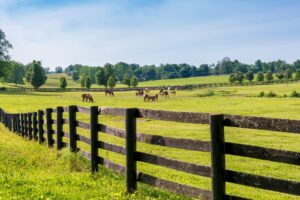“All things bright and beautiful, all creatures great and small,
all things wise and wonderful: The Lord God made them all.”
Cecil F. Alexander, Hymns for Little Children, 1848
“The chicken (Gallus gallus domesticus) is a type of domesticated fowl, a subspecies of the red junglefowl (Gallus gallus). They are one of the most common and widespread domestic animals, with a total population of 23.7 billion as of 2018. There are more chickens in the world than any other bird or domesticated fowl.” Wikipedia.com
So here you are, dreaming again. Maybe that small farm you were thinking about is a bit too much work. How about raising chickens? How hard can it be? Everyone loves chickens!
Now it’s true that everyone loves chickens. Even the beasts of the field love chickens. Your chickens will be beloved by local foxes, coyotes, raccoons, minks, weasels, skunks, opossums, owls, hawks, and your neighbor’s dog.
So what do you need to know?
Glenn Stevens knows a thing or two about chickens. He has been teaching agricultural education for over 30 years and currently teaches at Belton Middle School in Belton, South Carolina.
Stevens teaches a variety of topics to his students, including animal science. basic horticulture, agricultural tool identification, wildlife management, forestry, and hunter safety. By working with animals and plants at the school, the students learn responsibility and the skills required to care for them.
Maintaining the chicken coops is one of the chores for Stevens’ students.
“We normally try to keep six to eight chickens at school, including a rooster,” explains Stevens. “Currently we are raising a new flock, including Rhode Island Reds, Brahmas, and Ameraucanas.”
Stevens goes on to explain the process of raising chickens. “The students are responsible for caring for the chickens, gathering eggs, and checking on any eggs that we may have in the incubator. In order for egg to hatch in an incubator, the temperature must remain at 99° and 55% humidity. The eggs take 21 days to hatch.”
What else do you need to know to raise chickens?
“The key points in raising poultry is to have adequate space for the birds to forage, a roosting area, unlimited feed and water, and nest boxes for them to lay their eggs,” says Stevens. “Chickens are on the bottom of the food chain, so their pen must be predator proof.”
Is it hard to handle chickens?
Stevens says that chickens are very easy to handle. It is best to hold them with the wings pressed against their body so that they cannot flop around. When catching a chicken, it’s best to catch them by their feet and hold them upside down. This does not hurt them because they can turn their necks in a way that allows them to hold their head up.
Another expert on chickens is Kathy Whitby, owner of Barefoot Farms of Belton. She has over 200 chickens that she raises for eggs and meat. She agrees with Stevens that most of the time, chickens are easy to handle. However, chickens do resist when you are trying to gather their eggs. Whitby recommends wearing thick leather gloves.
What kind of chickens should you buy?
Well, an egg is an egg. And a chicken is a chicken. But chicken enthusiasts get caught up in plumage and egg color. Here is what you need to know about a few of the more popular breeds.
| Breed | Egg Color | Plumage |
|---|---|---|
| Ameraucana | Blue | Various browns |
| Araucana | Blue | White |
| Barnyard Mix | Who knows | Who knows |
| Brahma | Brown | White and beige |
| Booted Bantam | White or tinted in color | White and beige |
| Naked Neck Turken | Light brown | Black and brown |
| New Hampshire Red | Light brown | Red |
| Plymouth Rock | Brown | White and beige |
| Rhode Island Red | Brown | Red |
What is a chicken’s world view?
“A chicken’s world view does not extend past their pen,” says Stevens.“All they are looking for is food, water, a place to lay their eggs, a place to roost off the ground, and an area to scratch the ground for worms and other treats.”
And how intelligent is Gallus gallus domesticus?
Stevens is rather emphatic on that subject. “The only bright chicken is the one under the rotisserie light,” he says. “Chickens have the brain the size of a nickel.”
Really? Now it should be said that if I were defending said chickens, I would merely point to the daily news as prima facie evidence of the superior intellect of Gallus gallus domesticus. Other attorneys are welcome to chime in.
There you have it. Now go out there and raise some chickens.






